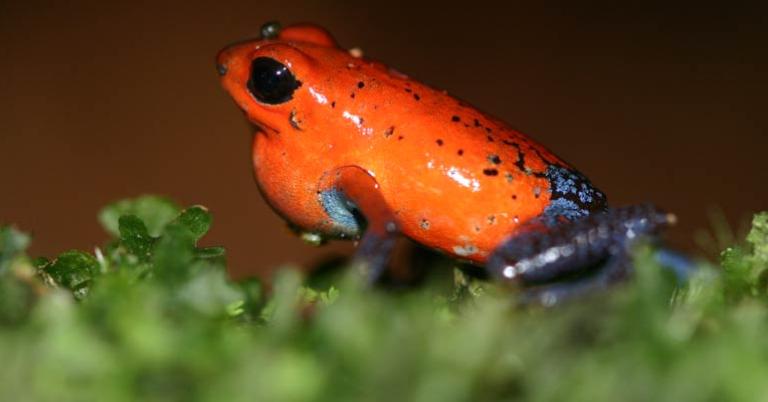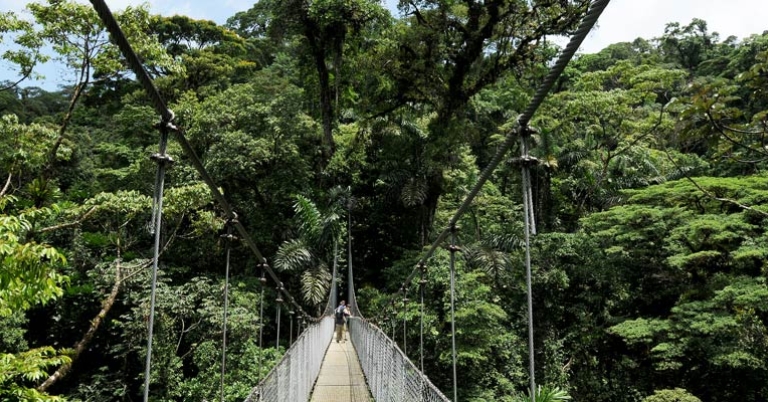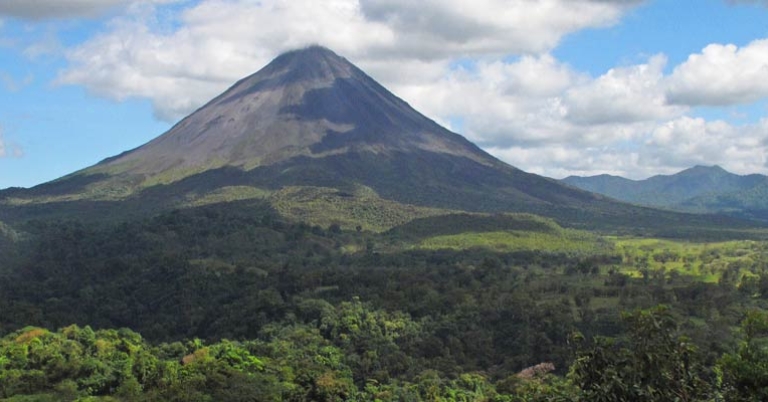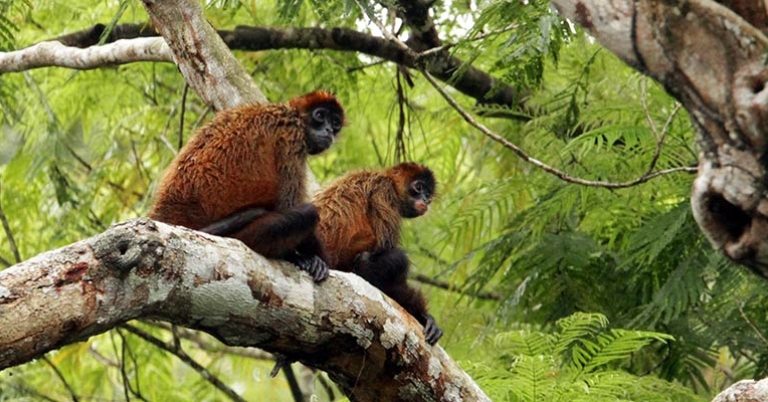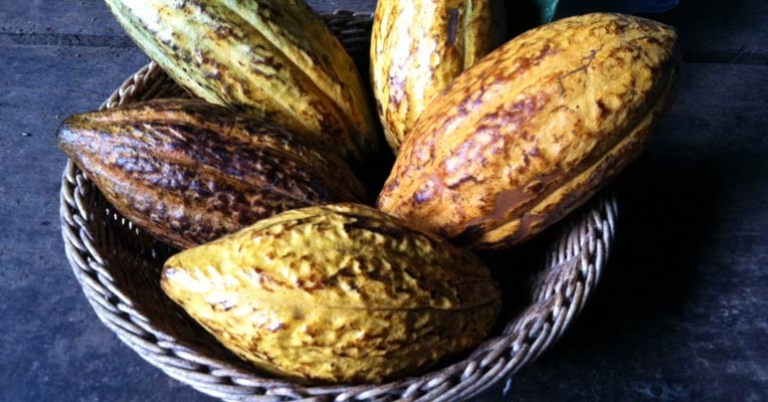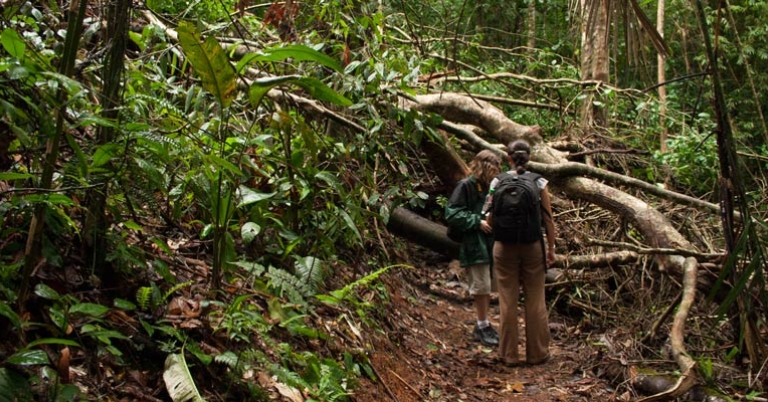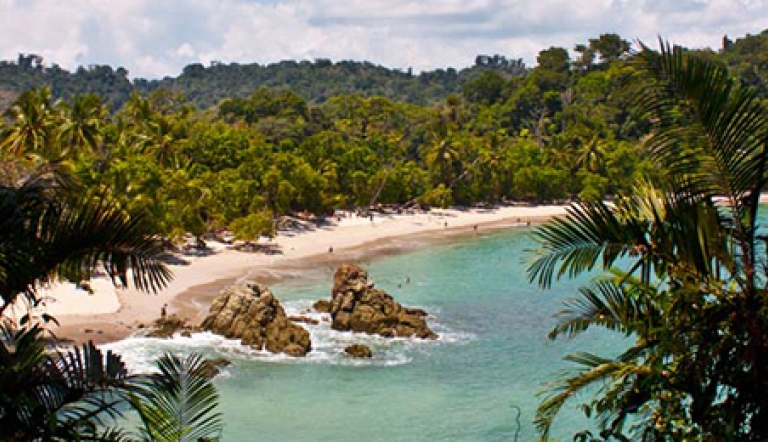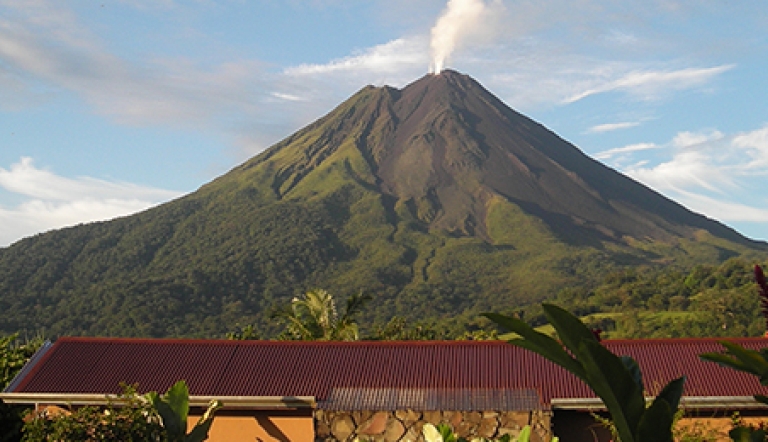Costa Rica | Rainforests, Rivers, Hot Springs, Chocolate, Coffee, and Arenal Volcano
Duration:
Interests:
About this trip
Despite its relatively small size, Costa Rica is full of treasures. Experience firsthand a cross-section of the nature, culture, and adventure activities that make this country so special. Begin your exploration in the Caribbean lowlands, where you can spot tropical birds and wildlife in primary and secondary rainforest, then continue to the iconic Arenal Volcano, where rivers, waterfalls, and thermal hot springs abound. Along the way, learn about the country’s culture and history and enjoy thrilling adventure activities.
Highlights
- Learn about traditional methods of chocolate-making as well as the cultural history of this important crop.
- Take guided hikes in the private reserve at Selva Verde Lodge, which protects 300 acres of virgin rainforest, and watch for wildlife like monkeys, toucans, and frogs.
- Take a relaxing river boat ride or embark on a thrilling whitewater rafting adventure on the Río Sarapiquí.
- Traverse a system of suspension bridges amid rainforest canopy in the shadow of Arenal Volcano.
- Visit an organic, shade-grown coffee farm to see how birds and animals can benefit from sustainable farming practices.
What makes us different
Rich content
Custom-tailored Trips
Wildlife up-close
Service anytime
Support local communities
Flight arrangements
Daily Itinerary
Print ItinerarySanto Domingo
Day 1Sarapiqui Valley
Day 2Day 3
Day 4
Arenal
Day 5Day 6
Day 7
Santo Domingo
Day 8Departure
Day 9Pricing
Print PricingTravel Info
Print Travel InfoEntry & Exit Requirements
U.S. and Canadian citizens must have a valid passport to enter Costa Rica. Passports must be valid for at least the duration of your stay. As this requirement is subject to change at any time without notice, we recommend at least 6 months' validity.
A visa is not required for visits up to 30 days.
If you are not traveling with a U.S. passport, please check with the Costa Rican Embassy for the requirements based on your nationality.
Health Information
IMMUNIZATIONS
The Centers for Disease Control recommends that all travelers be up to date on routine vaccinations such as measles-mumps-rubella (MMR) vaccine, diphtheria-pertussis-tetanus vaccine, varicella (chicken pox) vaccine, and your yearly flu shot before every trip.
There are no vaccinations required for entry into Costa Rica, unless you are traveling from an endemic yellow fever area within six weeks prior to entry.
Some physicians recommend that travelers get hepatitis A and typhoid vaccines before visiting Costa Rica.
Please consult your physician for additional information and recommendations based on your individual circumstances.
MALARIA
The CDC warns that travelers to Central America may be at risk for exposure to malaria. Malaria is caused by a parasite found in Anopheles mosquitos, which are active from dusk until dawn. Prevention is twofold: the use of anti-malarial drugs and the prevention of insect bites. If you choose to use an anti-malarial drug, as recommended by the CDC, see your physician for a prescription.
CHIKUNGUNYA
In June 2014, El Salvador reported locally transmitted cases of chikungunya in Central America. Local transmission means that mosquitoes in the area have been infected with chikungunya and are spreading it to people. Local transmission of chikungunya is now being reported in other countries in Central America. CDC recommends that travelers to the Central America area protect themselves from mosquito bites.
Zika Virus
Locally transmitted cases of Zika virus have been reported in Costa Rica. Local transmission means that mosquitoes in the area have been infected with Zika and are spreading it to people. The CDC recommends that travelers to Costa Rica protect themselves from mosquito bites. As a precaution, the CDC advises women who are pregnant to consider postponing travel to any area where Zika virus transmission is ongoing.
SUN EXPOSURE
The effects of the sun can be damaging to the eyes and skin. Spending time outdoors exposes you to the sun’s harmful ultraviolet (UV) rays, even on cloudy days. To protect yourself from the sun, use a broad spectrum sunscreen of at least SPF 15, protect skin with clothing, wear a wide-brimmed hat and sunglasses, and drink plenty of fluids.
Resources
Print ResourcesSuggested Packing List
To help you get ready for your expedition, below is a suggested packing list. You may find many of these items in our Gear Store, plus many clothing and accessory items.
CLOTHING
- T-shirts and one long-sleeved shirt for sun and mosquito protection
- Shorts for the field and in towns
- Pants (lightweight cotton), for protection against mosquitoes
- Lightweight jacket/poncho or sweater/sweatshirt
- Underwear
- Bathing suit
- Socks
- Shoes
- Hat or sun visor
- Waterproof gear -- coat, hat, shoes/boots
MISCELLANEOUS
- Binoculars (expensive ones are not necessary) and lens cleaner
- Camera and extra batteries
- A pocket calculator or phone to assist with currency exchange
- A small backpack for day walks
- Photocopies of all documentation, passport, and tickets
- Prescription drugs and a copy of the prescription
- Sunscreen
- Water bottle
- Non-perishable snacks
In addition to your toiletries, it is useful to pack a small medical kit, which you can easily prepare. Helpful items include bandages, mosquito repellant, antihistamine, a pain-reliever, individually wrapped moist towlettes, anti-diarrhea medicine, anti-fungal cream, and an extra pair of disposable contact lenses or eyeglasses if you wear them.

Questions
For more information, contact us at 800-451-7111 or email travel@holbrooktravel.com.
